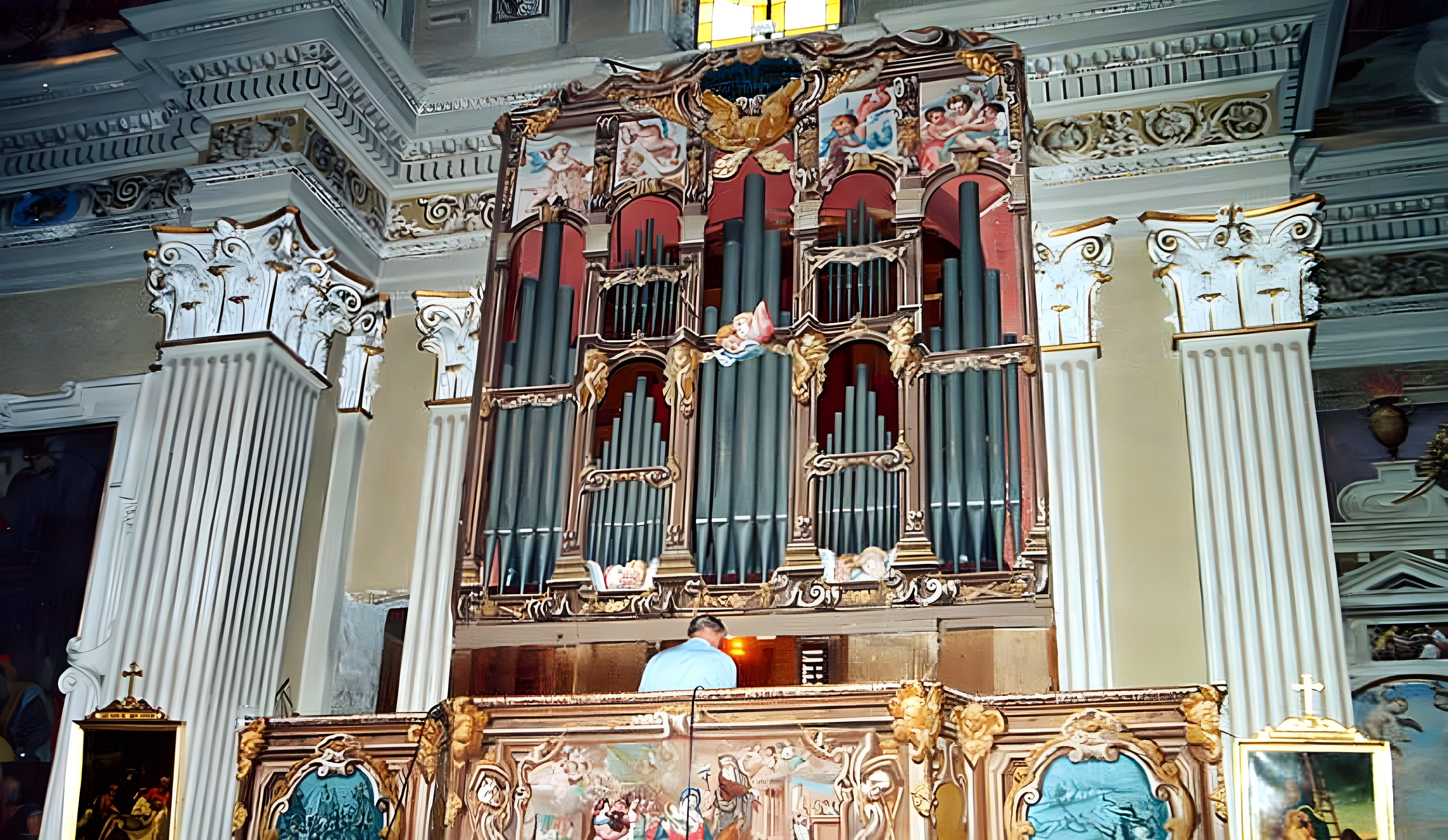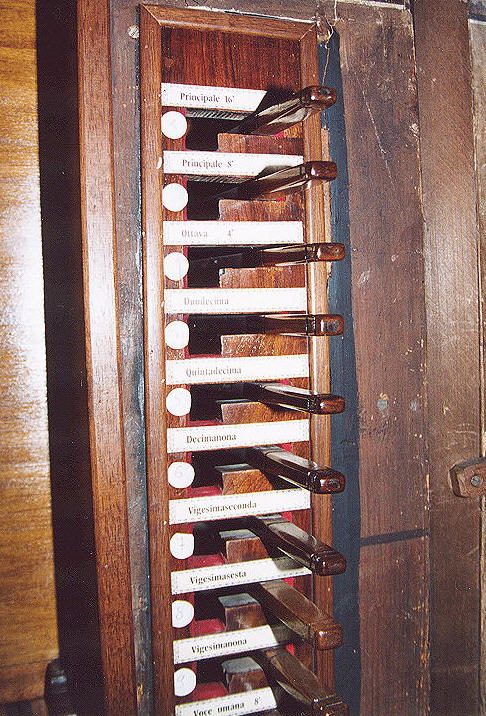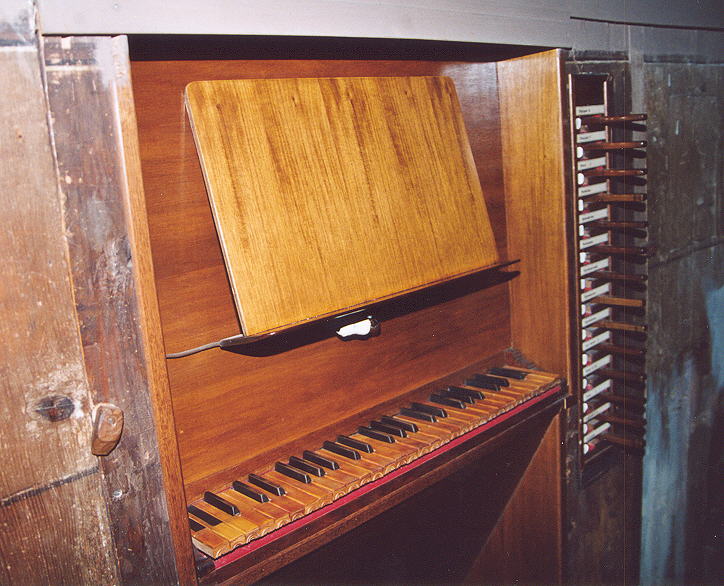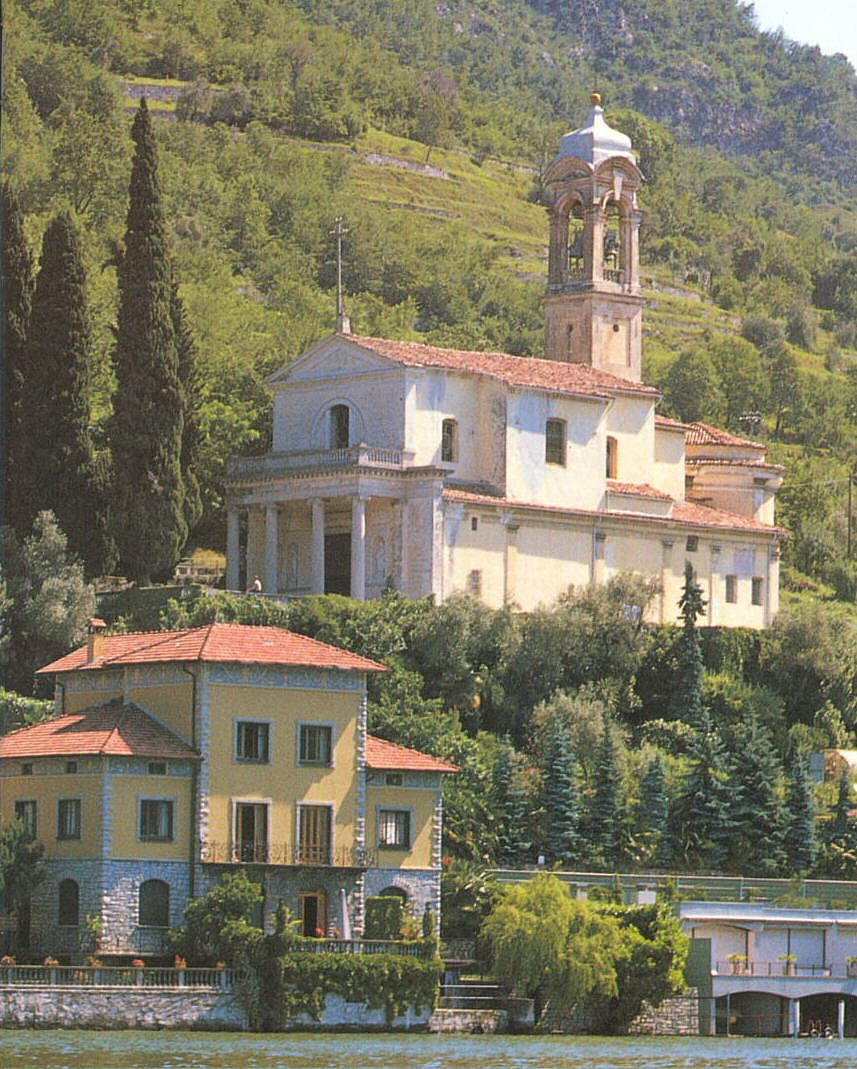Valsolda, Como, Santuario della Caravina
| Builder | M. Carboni |
|---|---|
| Year | ca. 1677 |
| Period/Style | Baroque |
| Stops | 13 |
| Keyboards | 1+P |
| Keyaction | tracker/mechanical |
| Tuning | Equal at 440 Hz |
| Sampleset |
Available
 , sampled by
OrganArt Media
, sampled by
OrganArt Media
|
The Michel Carboni organ, built between 1675 and 1677, is housed in the Santuario Nostra Signora della Caravina in Valsolda, near Lugano, Italy. This baroque church is characterized by its marble walls and unique acoustical properties that allow for a rich, prolonged reverberation of about four seconds, enhancing the sound of the organ. The instrument epitomizes the historical Italian organ design, typically featuring a single manual and a limited pedalboard primarily used to support bass lines. The design focuses on liturgical and choral accompaniment rather than solo performances, differing from other European organs by lacking common combination stops like mixtures.
The organ boasts unique stops such as the "Voce umana," which isn't a reed stop but a slightly detuned pipe rank that creates chorus-like effects. Primarily built with sonorous and warm Principal ranks, it also includes powerful overtone ranks that produce harpsichord-like sounds. Notable is the "Terzo mano," an octave coupler that significantly enhances the organ's fullness of sound, although this feature was likely a later addition from the 18th or 19th century and is not typical for music from the 17th century. In the 19th century, the organ was adapted to equal temperament, but recent decisions to revert it to mean tone temperament have restored its 17th-century sound authenticity. Thanks to numerous donations by pilgrims, the Carboni organ remains in excellent condition, resonating deeply with both the historical and sonic heritage of the region.
The organ boasts unique stops such as the "Voce umana," which isn't a reed stop but a slightly detuned pipe rank that creates chorus-like effects. Primarily built with sonorous and warm Principal ranks, it also includes powerful overtone ranks that produce harpsichord-like sounds. Notable is the "Terzo mano," an octave coupler that significantly enhances the organ's fullness of sound, although this feature was likely a later addition from the 18th or 19th century and is not typical for music from the 17th century. In the 19th century, the organ was adapted to equal temperament, but recent decisions to revert it to mean tone temperament have restored its 17th-century sound authenticity. Thanks to numerous donations by pilgrims, the Carboni organ remains in excellent condition, resonating deeply with both the historical and sonic heritage of the region.
| Manual | Pedal (always attached) |
|---|---|
| Principale 16' | Contrabassi 16' |
| Principale 8' | |
| Ottava 4' | |
| Duodecima | |
| Quintadecima | |
| Decimanona | |
| Vigesimaseconda | |
| Vigesimasesta | |
| Vigesimanona | |
| Flauto 8' | |
| Flauto in XII' | |
| Voce umana |
Frescobaldi-Messa 11
0:00
0:00
Frescobaldi-Messa 15
0:00
0:00
https://www.organartmedia.com/en/michel-carboni-organ
 Pipe Organ Map
Pipe Organ Map


